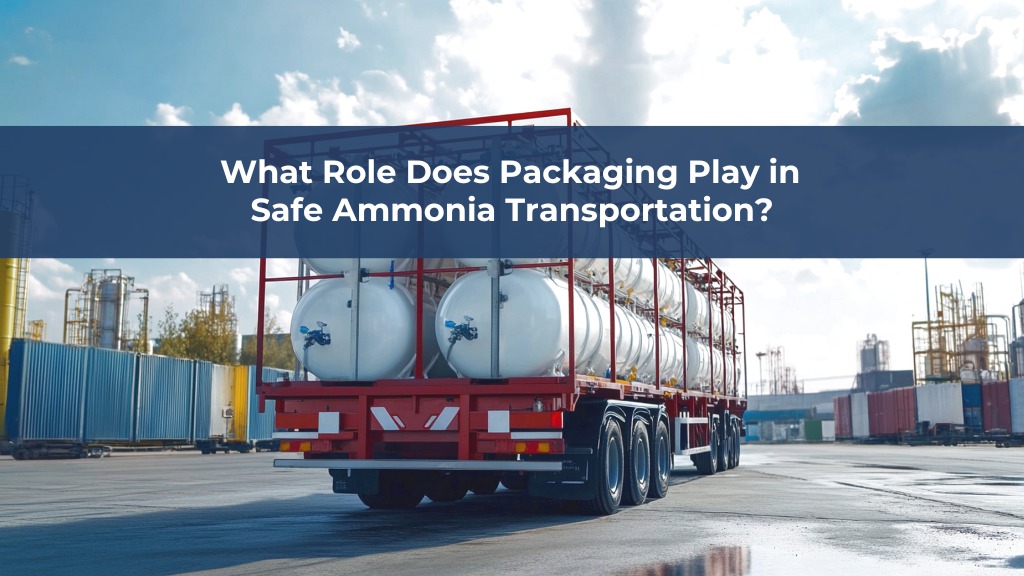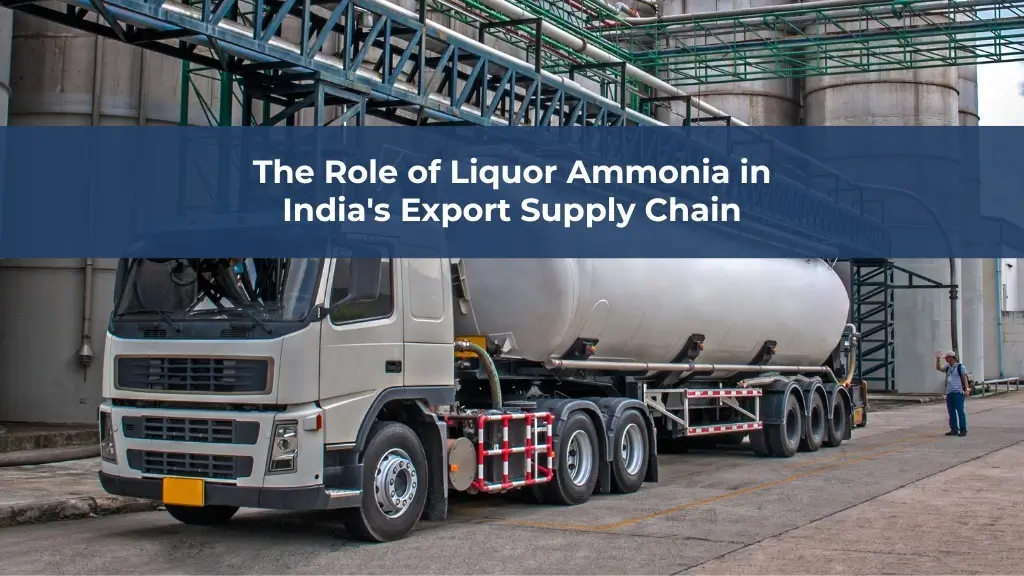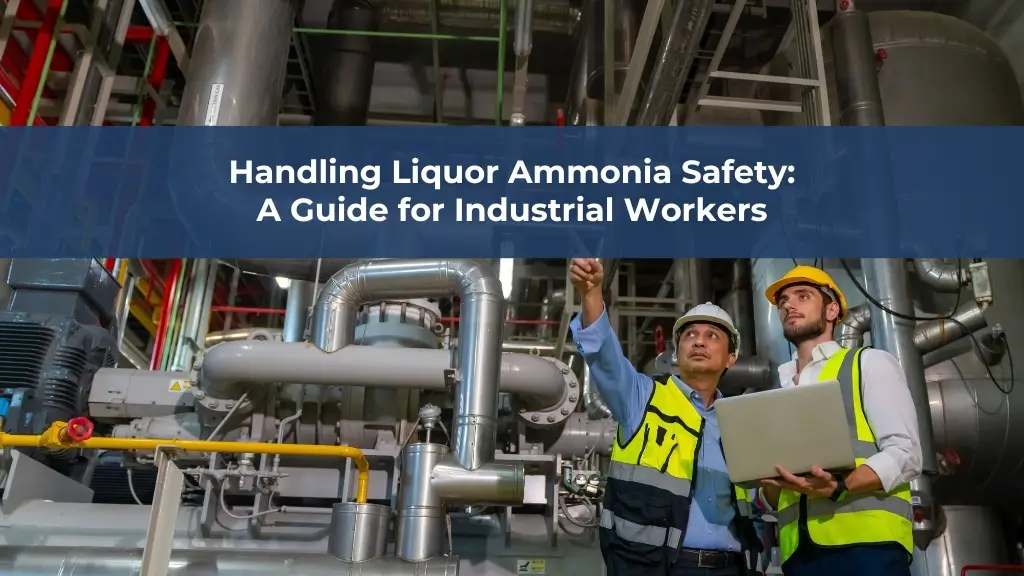Introduction
Ammonia is a cornerstone in various industrial sectors, from agriculture to refrigeration to chemicals. Its significant role in fertilizer production and chemical manufacturing makes it a high-demand commodity that frequently requires transportation across regions and borders. However, transporting ammonia presents unique challenges due to its hazardous properties. Ensuring safe ammonia transportation is crucial to protect public health, the environment, and to comply with stringent transportation regulations.
Properties of Ammonia
Chemically known as NH₃, ammonia is a colourless gas with a distinct, pungent odour. It is highly soluble in water and exhibits corrosive and toxic characteristics. Exposure to ammonia can cause severe respiratory issues and skin burns. Moreover, under certain conditions, ammonia is flammable, adding another layer of risk during transportation. Understanding these chemical properties is essential for developing effective packaging and safety protocols.
Regulatory Framework
The transportation of hazardous materials like ammonia is governed by comprehensive international and national regulations. Bodies such as the Petroleum and Explosives Safety Organisation (PESO) have established guidelines to ensure the safe handling and shipping of dangerous goods. Compliance with these regulatory standards is mandatory and involves strict adherence to packaging requirements, and documentation. Failure to comply can result in legal penalties and increased risk of accidents.
The Role of Packaging in Transportation
Packaging serves as the primary safety barrier in hazardous materials transport. It not only contains the ammonia but also protects against leaks, contamination, and physical damage during transit. Effective packaging minimizes the risk of exposure to personnel, the public, and the environment. It also plays a crucial role in maintaining the integrity and quality of the ammonia throughout the supply chain.
Types of Packaging for Ammonia
Various packaging solutions are utilized to transport ammonia safely:
Pressure Vessels
Designed to handle high internal pressures, these robust containers are ideal for transporting gaseous ammonia. They are constructed to withstand mechanical stresses and prevent gas leakage. These include ISO tanks, static storage tanks, road tankers, cylinders, and tonners.
Cryogenic Containers
Specialized for liquid ammonia at low temperatures, these containers maintain its liquid state and prevent vaporization. They feature advanced insulation to manage temperature fluctuations.
Composite Materials
Modern packaging often employs composite materials that combine metals and polymers, offering enhanced strength, corrosion resistance, and reduced weight. This innovation leads to improved fuel efficiency and lower transportation costs.
Material Compatibility
Selecting appropriate packaging materials is vital due to ammonia’s corrosive nature. Materials must resist corrosion to prevent container degradation, which could lead to leaks or structural failures. Common materials include stainless steel and specific alloys known for their durability and resistance to chemical attack. Material selection also considers factors like tensile strength and thermal stability to ensure long-term performance.
Packaging Design Considerations
Effective packaging design addresses several critical factors:
- Structural Integrity: Containers must endure mechanical stresses from handling, stacking, and movement during transportation. Reinforced structures and impact-resistant designs are essential.
- Leak Prevention Mechanisms: Advanced sealing technologies, such as high-performance gaskets and pressure relief valves, are integrated to prevent leaks and manage internal pressure changes.
- Ease of Handling: Design features that facilitate safe loading and unloading, such as ergonomic grips and secure attachment points, reduce the risk of accidents.
Technological Innovations in Packaging
Advancements in technology have led to smarter packaging solutions:
- Smart Packaging: Incorporating sensors that monitor temperature, pressure, and structural integrity in real-time enhances safety. These systems can alert operators to potential issues before they escalate.
- Advanced Sealing Technologies: Innovations like elastomeric seals and chemically resistant gaskets improve the reliability of containment systems, reducing the risk of leaks.
Testing and Certification
Before packaging can be used commercially, it must undergo rigorous testing and certification:
- Quality Assurance Protocols: Testing includes pressure tests, drop tests, and material analyses to ensure containers meet safety standards.
- Certification Processes: Regulatory bodies require documentation and certification to verify that packaging complies with all relevant regulations. This process involves inspections and approval from authorized organizations.
Handling and Storage Procedures
Proper handling and storage are integral to safe ammonia transportation:
- Loading and Unloading Practices: Trained personnel must follow strict procedures using appropriate equipment to prevent container damage and exposure.
- Storage Conditions During Transit: Containers should be secured to prevent movement, and environmental conditions such as temperature should be monitored to maintain ammonia’s stability.
Risk Mitigation Strategies
Implementing comprehensive risk management strategies is essential:
- Emergency Response Planning: Developing action plans for potential incidents minimizes the impact of accidents. This includes spill containment measures and evacuation procedures.
- Monitoring Systems: Real-time tracking and monitoring systems can detect anomalies, allowing for swift corrective actions to prevent accidents.
Environmental Considerations
Environmental protection is a key aspect of ammonia transportation:
- Minimizing Emissions: Airtight packaging reduces the risk of ammonia release into the atmosphere, mitigating pollution and health risks.
- Eco-Friendly Packaging Options: Utilizing recyclable materials and designing for reduced material usage contributes to sustainability goals without compromising safety.
Future Trends
The industry is evolving with new trends on the horizon:
- Regulatory Changes: Anticipated updates to regulations may impose stricter safety requirements, necessitating advancements in packaging solutions.
- Advances in Packaging Technology: Innovations such as nanomaterial coatings and predictive maintenance systems are expected to enhance safety and efficiency.
Conclusion
Packaging plays an indispensable role in ensuring the safe transportation of ammonia. By investing in high-quality, compliant packaging solutions and staying abreast of technological advancements, industry stakeholders can significantly reduce risks. It is imperative to implement best practices in packaging, handling, and risk management to protect people, property, and the environment. To learn more about optimizing your ammonia transportation processes and ensuring compliance with the latest regulations, contact us today and discover how our solutions can meet your needs.













